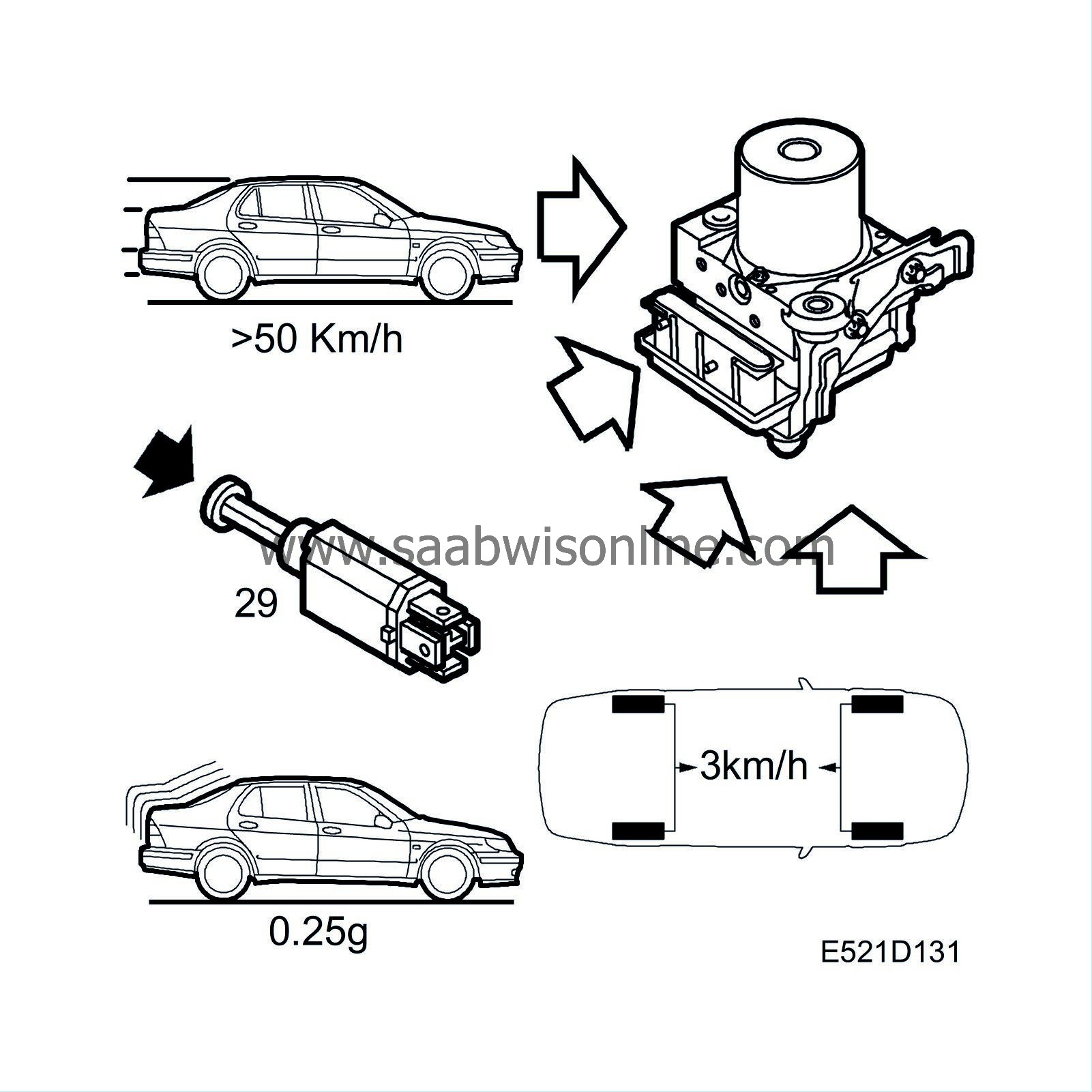Electronic Brake-force Distribution (EBD)
| Electronic Brake-force Distribution (EBD) |
EBD is a function built into the electronic control module that can be compared to a load sensing valve for the rear wheel brakes. To get the best possible braking performance it is important that both the front and rear wheels get the optimum braking action under all conditions and loads.


EBD modulation is operative at an early stage than standard ABS modulation. This provides a more comfortable ride than ABS braking.
It is important for good course stability that the rear wheels do not lock first when braking. To achieve this under varying load conditions (i.e. a heavily loaded vehicle demands stronger braking action before the wheels lock) the electronic control module uses the wheel velocity and controls the rear wheel braking operation with the solenoid inlet valves so that the permitted slip between the front and rear wheels does not exceed 3 km/h (1.9 mph).
The EBD comes into operation when the following criteria are met:
| • |
The vehicle speed is greater than 50 km/h (31 mph).
|
|
| • |
The brake light switch signals to the electronic control module that the brakes are activated.
|
|
| • |
The retardation is greater than 0.25 G.
|
|
| • |
The slip of the rear wheel compared to the slip of the front wheel is greater than 3 km/h (1.9 mph).
When the above criteria are met, the inlet valves close for both the rear wheels and EBD operation is activated to control slippage between the front and rear wheels until it is lower than 3 km/h (1.9 mph). If the a wheel lock during EBD modulation, the control mode changes to ABS modulation. |
|


